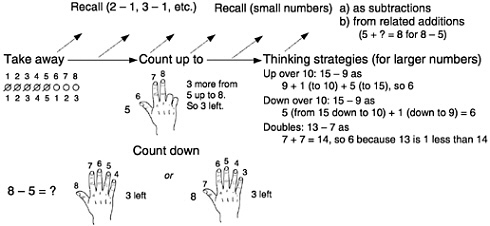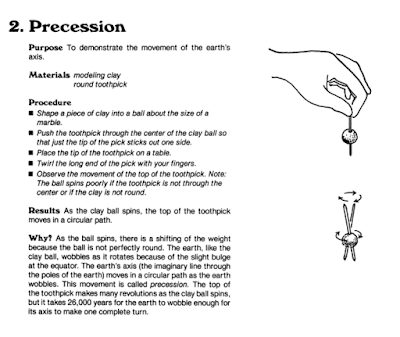الأحد، 31 يوليو 2016
الثلاثاء، 26 يوليو 2016
Shapes Song
Shapes Song
(Sing to the Tune of: "The Farmer in the Dell")
|
الأحد، 17 يوليو 2016
الخميس، 14 يوليو 2016
Here’s a Card Game idea for studying Greater Than/Less Than
Description of the activity:
You will need a set of playing cards for every two or four students. Students will shuffle the cards and put them in the middle of the group. Each student will roll a dice and the highest number starts the game. On the students turn, he will pick two cards from the pile. The cards are then placed in front of the student, and he will add and find the sum. After all 2 or 4 players have found the sum of their two cards, the student with the greatest sum, takes all the cards. The player with the greatest number of cards at the end of the game is the winner.
Extension: The game can also be reversed to find the lowest number for the difference of the two cards, then the student with the fewest number of cards at the end of the game is the winner.
الأربعاء، 13 يوليو 2016
Discussion about plants………..
Trigger questions
What do plants need to survive? (water, soil, sunlight)
Most plants drink water from the ground through their roots. The water travels up the
stem of the plant into the leaves and flowers, where it makes food. (This process is
called photosynthesis - process by which C20 and H20 in the presence of light are
converted to sugar and oxygen). Plants do this by soaking up sunlight in their leaves
and using the nutrition from the soil.
What happens if you cut the roots of a flower?
When a flower is cut, it no longer has its roots, but the stem of the flower still drinks
up the water and provides it to the leaves and flowers.
What happens if plants drink something other than water (e.g chemicals, insecticides)
It may affect the plants health and growth.
What happens if you put a flower in a cup of coloured water?
Before the children conduct their experiment – ask them to write down their
hypothesis (ask the children to guess the answer).
Using food colouring does not harm the plants in any way but allows children to see the
journey the water takes from the roots to the shoots.
In time the food colouring will be sucked up the stem along tiny tubes (called vessels)
and the petals of the flower will start to change in colour.
‘Flower Power‛ Activity
Materials you will need:
ü Water
ü Red food colouring (you can use green and blue too if you wish)!
ü Jam Jar
ü White flowers (one per group) e.g Carnation, Chrysanthemum, Marigold
Steps:
1. Fill the glass jar with 2cm of water.
2. Add 25 drops of food colouring.
3. Put the flower in the water (ensure that the flower is either freshly cut or trim
the stem of the flower at an angle to create a fresh cut).
4. If possible, ask the children to check the flowers every few hours to record any
progress. It may take up to 24 hours for the food colouring and water to
journey from the stem to the petals (but the results are worth waiting for!)
Conclusion
Trigger: What has happened? (Hint, look very closely at the petals and the stamen (the
bits in the middle of the flower). Ask the children to record their findings on their
worksheet
Experiment conclusion and discussion
Let‛s find out what happened to the flowers in each group. Ask each group to announce
what happened to their flower, and how long it took for the colour change to occur.
Why do you think the flower changed colour?
The flower absorbed the water through the stem and because the water was coloured,
the water turned the petals this colour. Did you know that plants need water to live?
Like humans, plants are living things which need food and water to survive. Nutrients
from the soil and water are absorbed through the roots and stems of plants.
Why The Summer isHot ?
Although this idea makes sense, it is incorrect.
It is true that Earth’s orbit is not a perfect circle. It is a bit lop-sided. During part of the year, Earth is closer to the sun than at other times. However, in the Northern Hemisphere, we are having winter when Earth is closest to the sun and summer when it is farthest away! Compared with how far away the sun is, this change in Earth's distance throughout the year does not make much difference to our weather.
There is a different reason for Earth's seasons.
Earth's axis is an imaginary pole going right through the center of Earth from "top" to "bottom." Earth spins around this pole, making one complete turn each day. That is why we have day and night, and why every part of Earth's surface gets some of each.
Earth has seasons because its axis doesn't stand up straight. Long, long ago, when Earth was young, it is thought that something big hit Earth and knocked it off-kilter. So instead of rotating with its axis straight up and down, it leans over a bit.
By the way, that big thing that hit Earth is called Theia. It also blasted a big hole in the surface. That big hit sent a huge amount of dust and rubble into orbit. Most scientists think that that rubble, in time, became our Moon.
As Earth orbits the sun, its tilted axis always points in the same direction. So, throughout the year, different parts of Earth get the sun’s direct rays.
الثلاثاء، 12 يوليو 2016
الاثنين، 11 يوليو 2016
Activity in The movement of The Earth's Axis lesson
The changing seasons are caused by the movements of the Earth. There are two important movements that affect the Earth. The first is the rotation of the Earth around an invisible axis. It takes the Earth about 24 hours to finish one complete rotation. The second important movement that affects the Earth is its revolution around the Sun. One revolution takes 365 ¼ days, or one year. Acting together, these two movements create variations in temperature, weather, and in the seasons.
This Activity to demonstrate the movement of the earth's axis .
الأحد، 10 يوليو 2016
السبت، 2 يوليو 2016
Steps to learn subtraction
* Write large numbers 1 through 10 on construction paper and give 10 students one number to hold in front of the class.
* Write the subtraction sentence "7 - 5" on the board.

* Ask the student who is holding the number 7 to hold it up high.
* Then ask students which direction should we go to subtract 5.
* Once students agree to count back, ask the child holding the number 6 to step forward.
* Next ask the student holding the number 5 to step forward. Continue these steps until 5 students have stepped forward.
* Write "2" to complete the subtraction sentence "7 - 5= 2."

* Tell students that today they're going to learn about counting back to find the difference.
* Read aloud the following word problem: "samer has 9 pencils. He gives 4 pencils away. How many pencils does Josh have left?"
Introduce the number line to model the word problem.
* Show how to start at the first number, 9, and count back by the second number, 4.
* Repeat the activity for 8 - 3 = 5 and 6 - 4 = 2.
* Tell students that the number you end on is the difference.
الاشتراك في:
التعليقات (Atom)
المشروعات البحثية للمراحل التعليمية الاساسية
أحصل على القوالب الخاصة بالمشروعات البحثية للمراحل التعليمية الاساسية من خلال هذا الرابط Get templates for research projects for basic edu...

-
توفر الأهداف في مجال التعليم قاعدة سليمة تساعد المعلم على اختيار الوحدة أو المادة الدراسية والطرق والإجراءات المتعلقة بها ، كما تمكنه من...
-
أولاً - تعريف الهدف السلوكي : رغم اختلاف العبارات في تحديد الهدف السلوكي ، إلاّ أن المضمون واحد ، فنجد أن هذه التعريفات لا تهمل ثلا...
-
توجد بعض المفاهيم المختلطة المهمة التى يجب ان نميز بين معانيها ومقصدها فالبعض يظن أن كلا من طرق التدريس و أسلوب التدريس و استراتيجيات ...












































